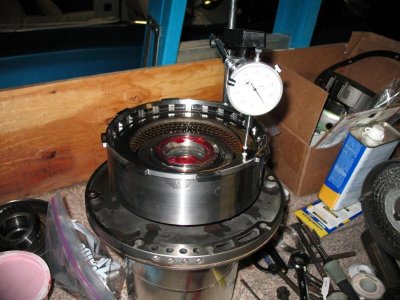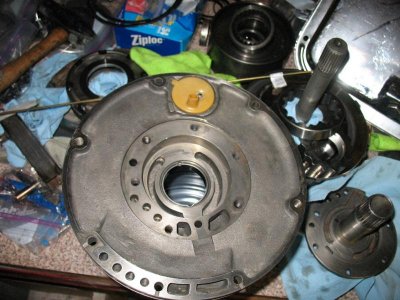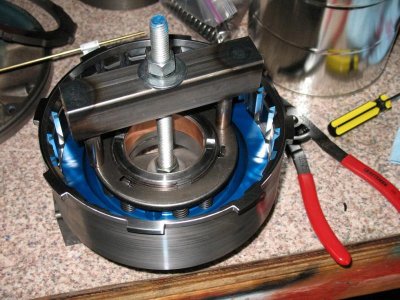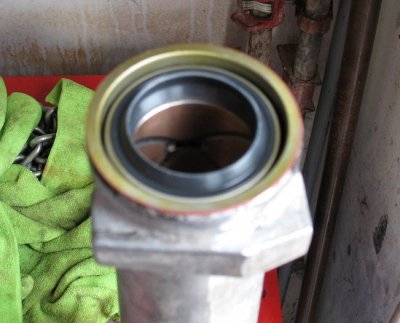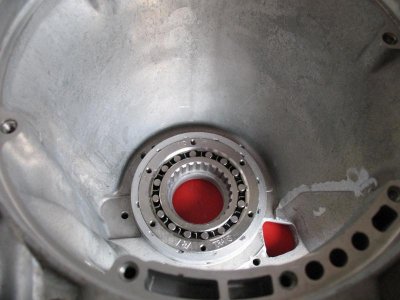Assembly lube, front pump/converter bushing, tailshaft bushing, paint can, etc.
You can put the pump assembly upside down on top of an old open paint can, and then put the clutch packs on, and pressure test the clutch packs using the holes in the pump. For the front clutches, I just use a dial indicator to verify clutch clearance when pressure testing. For the rear clutch, I just use a feeler gauge. If you try to use the dial indicator on the rear when pressure testing, the whole clutch tries to raise up.
A good way to stake the front pump bushing is to use the round shaft of a phillips screwdriver. A few pics using my home made clutch compressor. For the trans experts, is the rear bushing installed correctly with the hole to the top of the tailshaft housing?
View attachment 194696View attachment 194697View attachment 194698View attachment 194699View attachment 194700

